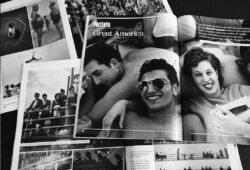Preparing for a curator’s visit: Two days with Francois Cheval, Audrey Hoareau and Thierry Bigaignon
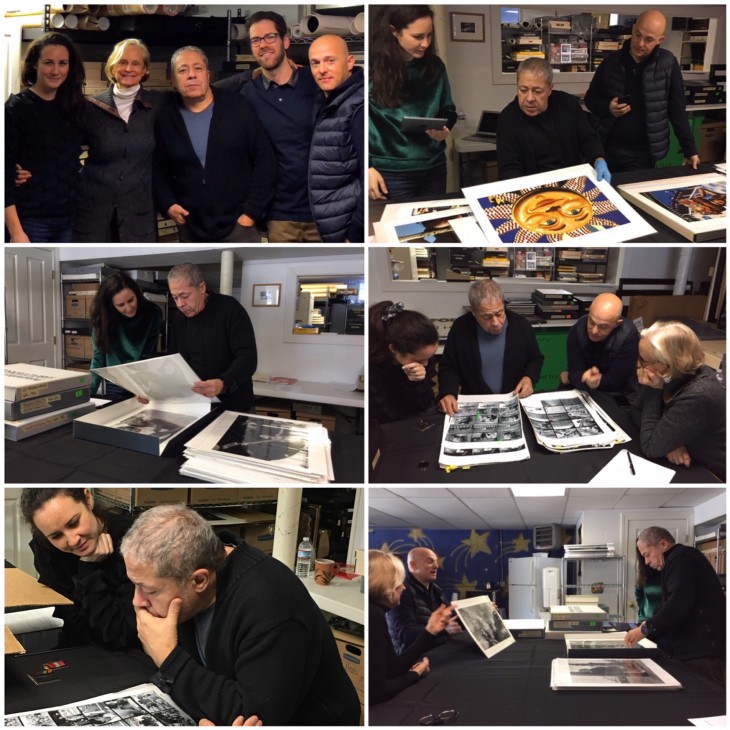
When my Paris dealer, Thierry Bigaignon, told me that he would be bringing curators Francois Cheval and Audrey Hoareau for a two day visit to the studio in January, I was ecstatic! Francois had served as director of the Musée Nicéphore-Niépce for 20 years, and recently launched The Red Eye, together with Audrey Hoareau who had also worked at the museum as an archiving specialist and project manager. The Red Eye curates and tours photography exhibitions worldwide and recently opened the first publicly funded photography museum in China.
After letting the reality of the visit sink in, I began thinking about how to make the best use of two days to cover almost 70 years of work!
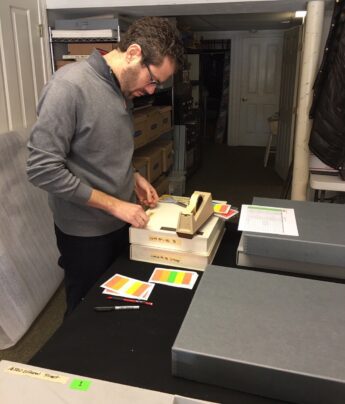
I’m sure others managing a huge archive have gone through a similar process of organizing and prioritizing. There are plenty of prints of course, both contemporary and vintage. Then there are digital files, Lightroom collections, 70 years of media clippings (almost all scanned already), pet book projects that never got completed, contact sheets, thousands of proof prints, ephemera such as show posters and invitations, the documentary film to watch, teaching tape clips from the YouTube channel, personal correspondence and writings. The list goes on. Then there’s information sheets — CV, bibliography, and a full narrative explication on the contents of the archive from soup to nuts!
Here’s a very helpful Excel sheet studio manager, Cory Levine, put together to give our visitors a “map” for navigating the various available offerings. Altogether there are 56 items on the spreadsheet and by the time the team left we had gone through about half! The other half of the items will be sent digitally as follow-up.
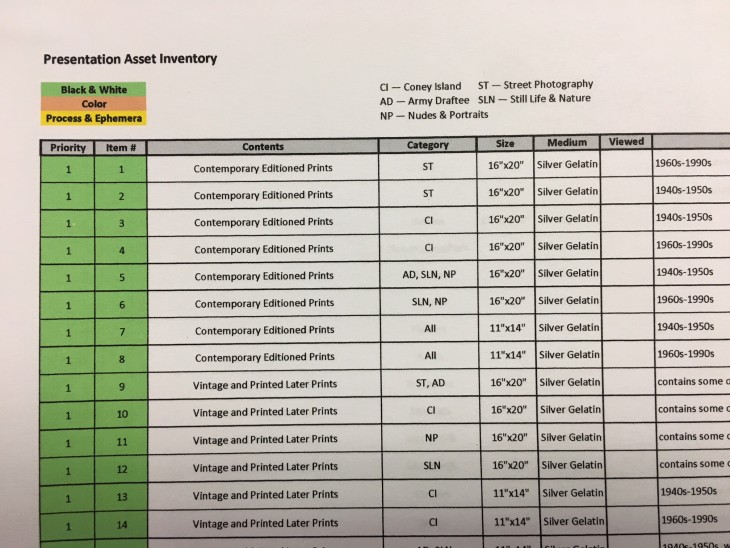
On the first morning we watched a rough cut of the soon-to-be-released documentary, Last Stop Coney Island: The life and photography of Harold Feinstein, followed by going through most of the print boxes in the afternoon. Day two was devoted to contact sheets and a wrap up discussion about next steps.
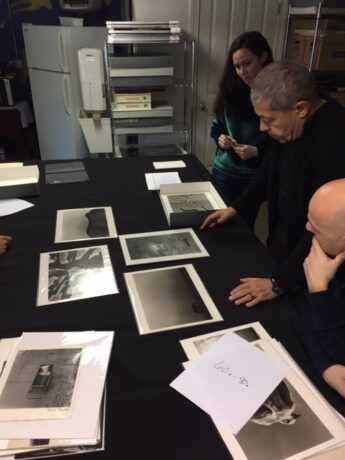
In preparing for the visit, the longest amount of time came from re-sleeving many of prints and adding backboards where they were missing, and looking through all the vintage print boxes again to make sure of a representative selection. Then the contents of each box needed to be re-inventoried for an up-to-date picture of what each one contains. (While presentation boxes were already organized, it seems inevitable that the contents get moved around, pulled out or re-assigned to another box for a smaller presentations and the need to up-date inventory accounting is constant!) The good news is that once you’ve created your presentation boxes, you can pretty much keep them as is for the future, remembering to replace prints that get removed or sold with another copy of the same, if available. We keep one of each of the limited edition prints (200 black & white and 200 color) at the ready with the next number in the edition — likewise for vintage prints, which are rarer and not editioned. Lightroom provides for lots of options in creating additional image viewing opportunities by decade, subject, book ideas, images not yet printed, etc. Also, all your scanned media and audio-visual materials can be stored in collections, making them easy to access.

Fortunately, we have been working for years to prepare Harold’s archive for just such events, and for the eventual final disposition of the work in the right institution years down the road. Ninety percent of black and white film negatives have been scanned and made into digital contact sheets. Individual images exist in the catalogue as high res files and the scanning of individual negs is on-going. Most of the video from the teaching tapes has been digitized, but the 100 hours of audio tape has hardly been touched, and the writings are begging for someone to edit them! Then there are the 30,000 color slides that have hardly been reviewed — and that’s a real shame because of the 25 editioned and signed prints from the slides, Francois and Audrey chose nearly all of them for the exhibition. If only we had been able to do more editing of those before Harold left us.
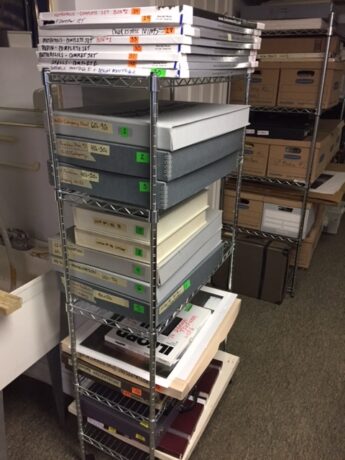
One of the most time consuming activities in the studio is keeping track of inventory! We have graduated from our initial Bento database (think FileMakerPro lite!), then on to a very unweildy, but functional Excel spreadsheet and finally on to iArchive, a software package developed by Ilon and Company, which we are only really beginning to explore. Those of you manage an archive can appreciate the amount of time required in reconciling inventory after every sale, consignment, presentation. No matter how hard you try, things get moved around, or worse — go missing!
From my experience, the most important steps to get your archive in shape for a curator (and for that matter, for yourself!) are these:
1. Have a good inventory database system up-to-date at all times to keep track of all your assets, and make it easy to know exactly what is in each box.
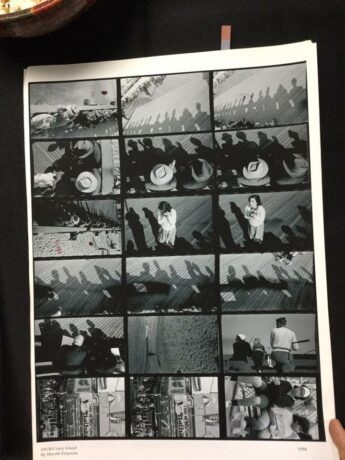
2. If you’ve been working with film (as opposed to digital), we have found that scanning all negative strips and making large digital contact sheets, which can then be printed on 13×19 paper, a very good investment of time. The option of seeing individual frames enlarged on a computer screen or on paper makes the job of reviewing lots of images much easier and quicker. (See the post: Making contacts: New, old and in-between for more on this). The same is true for slides.
3. Think about making separate presentation boxes for special projects that may represent experiments or specific processes used as part of your art. For example, we pulled together the various drawings and cut-up proof prints that Harold used in the making of photo montage for one box. In another we have mock-ups and print-outs of book projects that never got completed, but were on Harold’s wish list. Having everything labeled, color-coded and prioritized.
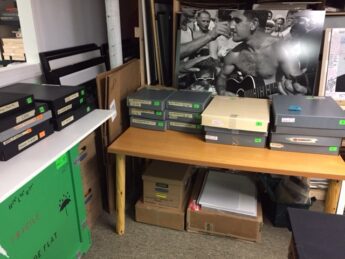
4. Use Adobde Lightroom or Bridge to organize your collections for viewing, and think in advance of the various levels of organization that will suit the particular interests of the curator. Will s/he want to see a chronological overview? A break-down by themes or subjects? What’s printed and not printed? What has appeared in certain exhibitions and publications, etc? Later, these collections can be made into PDF files (1 or 2 images per page, or as desired) and kept in the Cloud for others to access at any time. Or, just export to Dropbox or other file transfer platform. (I find making them into PDFs is easier for the recipient to look through and potentially re-sequence or re-arrange if they want to).
5. Have one each of all editioned prints always up-to-date in your boxes with the next number available. Use high-quality sleeves and back boards to avoid damage when prints are being moved around.
6. Have all your media clippings scanned and organized by decade and publication in a Lightroom catalogue. Keep an up-dated bibliography that includes links to digital-only publications.
I’m sure there are lots of other tips out there for keeping your archive organized and ready for viewing! I welcome hearing from others’ who may have additional or other tips! Good luck and enjoy! And watch for more information on the touring retrospective and a fall exhibition at the Galerie Thierry Bigaignon in Paris!

